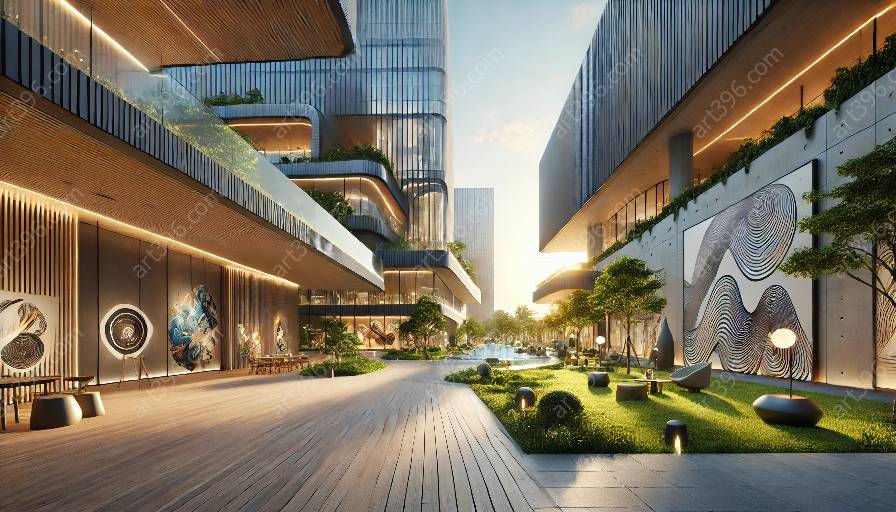Contemporary architectural design encompasses a set of key principles that define the aesthetic, functional, and environmental aspects of modern buildings. As architects continue to push the boundaries of creativity and innovation, these principles play a crucial role in shaping the built environment of today and the future.
Contextual Integration
One of the foundational principles of contemporary architectural design is contextual integration, which emphasizes the harmonious relationship between new structures and their surroundings. Architects strive to create designs that respond to the cultural, historical, and physical context of the site, ensuring that the new building enriches its environment rather than disrupts it. This principle encourages the seamless integration of modern architecture into existing urban fabric while preserving the unique identity of each place.
Sustainability and Environmental Consciousness
With a growing awareness of environmental issues, sustainability has become a central tenet of contemporary architectural design. Architects prioritize the use of eco-friendly materials, energy-efficient systems, and green technologies to minimize the environmental impact of their projects. From passive design strategies to the incorporation of renewable energy sources, sustainable architecture aims to reduce carbon footprint and promote responsible resource management. This principle underscores the importance of creating buildings that contribute to social and ecological well-being.
Functional Adaptability
Contemporary architectural design places a strong emphasis on functional adaptability to accommodate diverse user needs and evolving spatial requirements. Architects strive to create flexible spaces that can easily adapt to changing uses and technological advancements. This principle encourages the design of multi-purpose environments that foster creativity, collaboration, and efficiency, catering to the dynamic nature of contemporary lifestyles and work practices.
Innovation and Technological Integration
Embracing innovation and technological advancements is another key principle of contemporary architectural design. Architects leverage cutting-edge design tools, computational software, and digital fabrication techniques to explore new possibilities in form, structure, and materiality. The integration of technology allows architects to push the boundaries of creativity and efficiency, enabling the realization of complex design ideas and sustainable construction methods.
Human-Centric Approach
Human-centric design lies at the core of contemporary architectural principles, emphasizing the creation of spaces that prioritize human experience, well-being, and comfort. Architects consider psychological and physiological aspects of human interaction with the built environment, striving to design spaces that promote inclusivity, accessibility, and wellness. This principle underscores the importance of addressing the emotional and functional needs of building occupants, ultimately shaping designs that enhance the quality of life.
Visual Expressiveness and Aesthetic Excellence
Contemporary architectural design embraces visual expressiveness and aesthetic excellence, seeking to create buildings that inspire, captivate, and provoke thought. Architects explore diverse forms, materials, and spatial compositions to imbue their designs with a unique identity and cultural significance. This principle encourages architectural innovation and artistic expression, contributing to the rich tapestry of contemporary built environment while reflecting the spirit of the times.
Collaboration and Interdisciplinary Engagement
Collaboration and interdisciplinary engagement have emerged as essential principles in contemporary architectural design, encouraging architects to work in tandem with urban planners, engineers, artists, and stakeholders. By fostering a collaborative approach, architects can integrate diverse perspectives, expertise, and cultural influences into their designs, resulting in holistic and socially responsive architectural solutions. This principle emphasizes the importance of inclusive and participatory design processes that reflect the aspirations and values of the communities they serve.

















































































